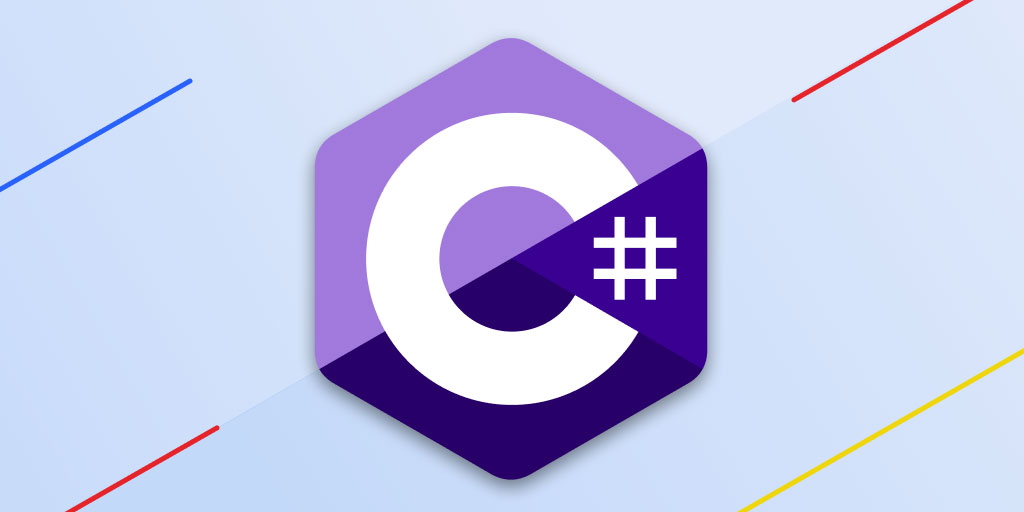To format a number as currency in C#, use ToString("C") for basic formatting, which applies the correct symbol and separators based on current culture. 1. For consistent results across environments, specify a culture using CultureInfo. 2. To fully customize the format, such as changing the symbol or decimal places, use NumberFormatInfo. 3. In UI frameworks like WPF or ASP.NET, apply formatting directly in bindings or views while ensuring the correct culture is set application-wide for consistency.

Formatting a number as a currency string in C# is pretty straightforward, especially if you're working within the right context like a desktop app, web app, or service that respects regional settings. Here's how to do it effectively.

Use ToString("C") for basic currency formatting
The simplest and most common way to format a number as currency is by using the "C" standard numeric format specifier. This automatically applies the correct symbol (like $), thousands separators, and decimal places based on the current culture.
For example:

decimal amount = 1234.56m;
string formatted = amount.ToString("C");If your system is set to US English, this will output: $1,234.56.
Note: If you're running this in environments like a server or cloud function, the result may vary depending on the default culture of the machine unless you explicitly set it.
Specify culture for consistent results
Sometimes you want the currency format to match a specific region regardless of where the code runs — for instance, displaying Euros in a European locale or Yen without decimals.
You can control this by passing a CultureInfo object:
using System.Globalization;
decimal amount = 1234.56m;
var culture = new CultureInfo("de-DE"); // German (Germany)
string formatted = amount.ToString("C", culture);This will give you: 1.234,56 €
- The comma is used as a decimal separator.
- The euro symbol appears after the amount.
Here are some commonly used cultures:
"en-US"– US Dollar"ja-JP"– Japanese Yen (no decimals)"fr-FR"– Euro in French format"es-ES"– Euro in Spanish format
Customize currency format with NumberFormatInfo
If you need full control — like changing the currency symbol or adjusting decimal places – use NumberFormatInfo:
using System.Globalization;
var currencyFormat = new NumberFormatInfo
{
CurrencySymbol = "€",
CurrencyDecimalDigits = 0,
CurrencyGroupSeparator = ".",
CurrencyDecimalSeparator = ","
};
decimal amount = 1234.56m;
string customFormatted = amount.ToString("C", currencyFormat);Result: €1.235
(Notice it rounds up and uses no decimals)
This is handy when:
- You're generating reports for a specific format.
- You're dealing with currencies that don't follow standard culture rules.
- You want to override the symbol (e.g., display USD with a different symbol).
Consider data-binding scenarios
In UI frameworks like WPF or ASP.NET, you might format currency directly in XAML or Razor views. In those cases, you can still use similar formatting strings but apply them differently.
For example, in Razor:
@String.Format("{0:C}", Model.Price)Or in WPF binding:
<TextBlock Text="{Binding Price, StringFormat={}{0:C}}" />These approaches rely on the same underlying formatting engine, so setting the correct culture at the application level ensures consistency across all layers.
That’s basically how you handle currency formatting in C#. It's not complicated, but knowing how culture affects formatting and when to customize makes all the difference.
The above is the detailed content of How to format a number as a currency string in C#?. For more information, please follow other related articles on the PHP Chinese website!

Hot AI Tools

Undress AI Tool
Undress images for free

Undresser.AI Undress
AI-powered app for creating realistic nude photos

AI Clothes Remover
Online AI tool for removing clothes from photos.

Clothoff.io
AI clothes remover

Video Face Swap
Swap faces in any video effortlessly with our completely free AI face swap tool!

Hot Article

Hot Tools

Notepad++7.3.1
Easy-to-use and free code editor

SublimeText3 Chinese version
Chinese version, very easy to use

Zend Studio 13.0.1
Powerful PHP integrated development environment

Dreamweaver CS6
Visual web development tools

SublimeText3 Mac version
God-level code editing software (SublimeText3)
 Creating and Applying Custom Attributes in C#
Jul 07, 2025 am 12:03 AM
Creating and Applying Custom Attributes in C#
Jul 07, 2025 am 12:03 AM
CustomAttributes are mechanisms used in C# to attach metadata to code elements. Its core function is to inherit the System.Attribute class and read through reflection at runtime to implement functions such as logging, permission control, etc. Specifically, it includes: 1. CustomAttributes are declarative information, which exists in the form of feature classes, and are often used to mark classes, methods, etc.; 2. When creating, you need to define a class inherited from Attribute, and use AttributeUsage to specify the application target; 3. After application, you can obtain feature information through reflection, such as using Attribute.GetCustomAttribute();
 Designing Immutable Objects and Data Structures in C#
Jul 15, 2025 am 12:34 AM
Designing Immutable Objects and Data Structures in C#
Jul 15, 2025 am 12:34 AM
The core of designing immutable objects and data structures in C# is to ensure that the state of the object is not modified after creation, thereby improving thread safety and reducing bugs caused by state changes. 1. Use readonly fields and cooperate with constructor initialization to ensure that the fields are assigned only during construction, as shown in the Person class; 2. Encapsulate the collection type, use immutable collection interfaces such as ReadOnlyCollection or ImmutableList to prevent external modification of internal collections; 3. Use record to simplify the definition of immutable model, and generate read-only attributes and constructors by default, suitable for data modeling; 4. It is recommended to use System.Collections.Imm when creating immutable collection operations.
 Handling Large Datasets Efficiently with C#
Jul 06, 2025 am 12:10 AM
Handling Large Datasets Efficiently with C#
Jul 06, 2025 am 12:10 AM
When processing large amounts of data, C# can be efficient through streaming, parallel asynchronous and appropriate data structures. 1. Use streaming processing to read one by one or in batches, such as StreamReader or EFCore's AsAsyncEnumerable to avoid memory overflow; 2. Use parallel (Parallel.ForEach/PLINQ) and asynchronous (async/await Task.Run) reasonably to control the number of concurrency and pay attention to thread safety; 3. Select efficient data structures (such as Dictionary, HashSet) and serialization libraries (such as System.Text.Json, MessagePack) to reduce search time and serialization overhead.
 Mastering C# Reflection and Its Use Cases
Jul 06, 2025 am 12:40 AM
Mastering C# Reflection and Its Use Cases
Jul 06, 2025 am 12:40 AM
Reflection is a function in C# for dynamic analysis and modification of program structures at runtime. Its core functions include obtaining type information, dynamically creating objects, calling methods, and checking assembly. Common application scenarios include: 1. Automatically bind the data model, such as mapping dictionary data to class instances; 2. Implement the plug-in system, loading external DLLs and calling its interface; 3. Supporting automated testing and logging, such as executing specific feature methods or automatically recording logs. When using it, you need to pay attention to performance overhead, encapsulation corruption and debugging difficulties. Optimization methods include caching type information, using delegates to improve call efficiency, and generating IL code. Rational use of reflection can improve the flexibility and versatility of the system.
 Creating Custom Middleware in ASP.NET Core C#
Jul 11, 2025 am 01:55 AM
Creating Custom Middleware in ASP.NET Core C#
Jul 11, 2025 am 01:55 AM
Create custom middleware in ASP.NETCore, which can be implemented by writing classes and registering. 1. Create a class containing the InvokeAsync method, handle HttpContext and RequestDelegatenext; 2. Register with UseMiddleware in Program.cs. Middleware is suitable for general operations such as logging, performance monitoring, exception handling, etc. Unlike MVC filters, it acts on the entire application and does not rely on the controller. Rational use of middleware can improve structural flexibility, but should avoid affecting performance.
 Writing Maintainable and Testable C# Code
Jul 12, 2025 am 02:08 AM
Writing Maintainable and Testable C# Code
Jul 12, 2025 am 02:08 AM
The key to writing C# code well is maintainability and testability. Reasonably divide responsibilities, follow the single responsibility principle (SRP), and take data access, business logic and request processing by Repository, Service and Controller respectively to improve structural clarity and testing efficiency. Multi-purpose interface and dependency injection (DI) facilitate replacement implementation, extension of functions and simulation testing. Unit testing should isolate external dependencies and use Mock tools to verify logic to ensure fast and stable execution. Standardize naming and splitting small functions to improve readability and maintenance efficiency. Adhering to the principles of clear structure, clear responsibilities and test-friendly can significantly improve development efficiency and code quality.
 Best Practices for Using LINQ in C# Effectively
Jul 09, 2025 am 01:04 AM
Best Practices for Using LINQ in C# Effectively
Jul 09, 2025 am 01:04 AM
The following points should be followed when using LINQ: 1. Priority is given to LINQ when using declarative data operations such as filtering, converting or aggregating data to avoid forced use in scenarios with side effects or performance-critical scenarios; 2. Understand the characteristics of delayed execution, source set modifications may lead to unexpected results, and delays or execution should be selected according to requirements; 3. Pay attention to performance and memory overhead, chain calls may generate intermediate objects, and performance-sensitive codes can be replaced by loops or spans; 4. Keep the query concise and easy to read, and split complex logic into multiple steps to avoid excessive nesting and mixing of multiple operations.
 Deep Dive into C# Generics Constraints and Covariance
Jul 12, 2025 am 02:00 AM
Deep Dive into C# Generics Constraints and Covariance
Jul 12, 2025 am 02:00 AM
Generic constraints are used to restrict type parameters to ensure specific behavior or inheritance relationships, while covariation allows subtype conversion. For example, whereT:IComparable ensures that T is comparable; covariation such as IEnumerable allows IEnumerable to be converted to IEnumerable, but it is only read and cannot be modified. Common constraints include class, struct, new(), base class and interface, and multiple constraints are separated by commas; covariation requires the out keyword and is only applicable to interfaces and delegates, which is different from inverter (in keyword). Note that covariance does not support classes, cannot be converted at will, and constraints affect flexibility.







